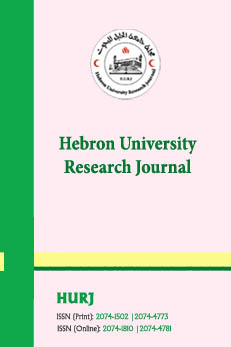Hebron University Research Journal (HURJ): B- (Humanities)
أسلوب القصة وأغراضه التربوية في الصحيحين
- Author: د. ايمن محمد عبد العزيز عمرو
- ISBN: 2074-4781
- N°: 0
- Year: 2014
-
Link:
 أسلوب القصة وأغراضه التربوية في الصحيحين
أسلوب القصة وأغراضه التربوية في الصحيحين
Review
الملخـــص:
تهدف هذه الدراسة إلى الكشف عن الأغراض التربوية لأسلوب القصة في صحيحي الإمامين البخاري ومسلم, في محاولة لتأصيل العلوم التربوية المستمدة من السنة النبوية الصحيحة وفق منهج علمي يقوم على الاستقصاء والتحليل والاستنباط. وقد تناولت هذه الدراسة مقدمة وأربعة مطالب هي: مفهوم القصة في اللغة والاصطلاح، والأهداف التربوية للقصة في الصحيحين، والأساليب التعليمية المستخدمة في القصة النبوية، وأهم خصائص القصة النبوية في الصحيحين. وقد خلصت الدراسة إلى مجموعة من النتائج منها:
-
للقصة النبوية مجموعة من الأهداف تتلخص ببناء العقيدة الصحيحة عند الصحابة رضوان الله عليهم، والحث على التزام القيم والأخلاق الإسلامية السامية، وتعميق الثقة بالله تعالى والاعتماد عليه في كل مجالات الحياة، وتوجيه أنظار المؤمنين نحو الحياة الآخرة، وبيان بعض الأحكام الشرعية التي وردت في سياق القصص النبوي.
- القصة النبوية لم تلتزم بنوع واحد من أساليب العرض، بل تنوعت حسب تنوع الفئة المستهدفة، وتنوع الغرض من القصة، ومن أهم الاساليب التعليمية التي توصلت إليها الدراسة: أسلوب الترغيب والترهيب ، وأسلوب ضرب المثال، وأسلوب الموعظة الحسنة، وأسلوب السؤال والجواب.
- تتميز القصة النبوية عن غيرها من القصص الأدبي بمجموعة من الخصائص منها: الصدق وتمام المطابقة مع الواقع، والتركيز على الفائدة المرجوة من القصة وأخذ العبرة منها، وسهولة الألفاظ ووضوح الأساليب، والقصر وعدم الإطالة لتحقيق أهداف القصة، و تجنب استخدام الألفاظ المعيبة حتى في المواقف التي فيها حرج.وأوصت الدراسة بدعوة الجامعات العربية والإسلامية إلى تشجيع الأبحاث العلمية المتعلقة بتأصيل العلوم التربوية المستمدة من السنة النبوية الصحيحة, وكذلك دعوة الخطباء والأدباء والإعلاميين إلى استخراج ما في قصص السنة الصحيحة من قيم تربوية تسهم في نهضة الأمة وفق منهج الله تعالى .
Abstract :
This study aims to clarify the educational purposes of the story narrative in the Saheehs of Imam Bukhari and Muslim, in an attempt to consolidate the educational sciences from the Sunnah according to a scientific approach based on deep analysis and inference.
This study addresses several points: the concept of the story in the language and terminology, the educational goals of the story in the Saheehs, the teaching methods used in the prophetic stories and the main characteristics of the prophetic stories in the Saheehs.
The study has concluded many results :
- The prophetic story has set many objectives which can be summarized in building the true faith of the Companions “God bless them “, encouraging the commitment of the Islamic values and ethics , deepening the trust in Allah and relying on him in all areas of life , drawing the attention of the believers to the afterlife , and explaining some of the Islamic rulings that were mentioned in the context of the prophetic stories.
- The prophetic story did not adhere to one type of display methods , but varied according to the diversity of the target group and the diversity of the purpose of the story .The most important educational methods used were: “rewards and punishment “approach, striking example method, good advice method and the question and answer method.
- The prophetic story is distinguished from other literary stories by set of features including: honesty and fully conforming with reality, focusing on the usefulness of the story and taking the lessons of it, the ease of words and clarity of styles, being short and lack the prolongation to achieve the goals of the story, and avoiding the use of defective terms even in embarrassing situations.
- The study makes a recommendation where we invite Arabic and Islamic Universities and Institutes and media to encourage scientific research focused on consolidation of educational methodologies and approaches derived from prophetic Sunnah and consider using these approaches in reshaping the current values of our society.





